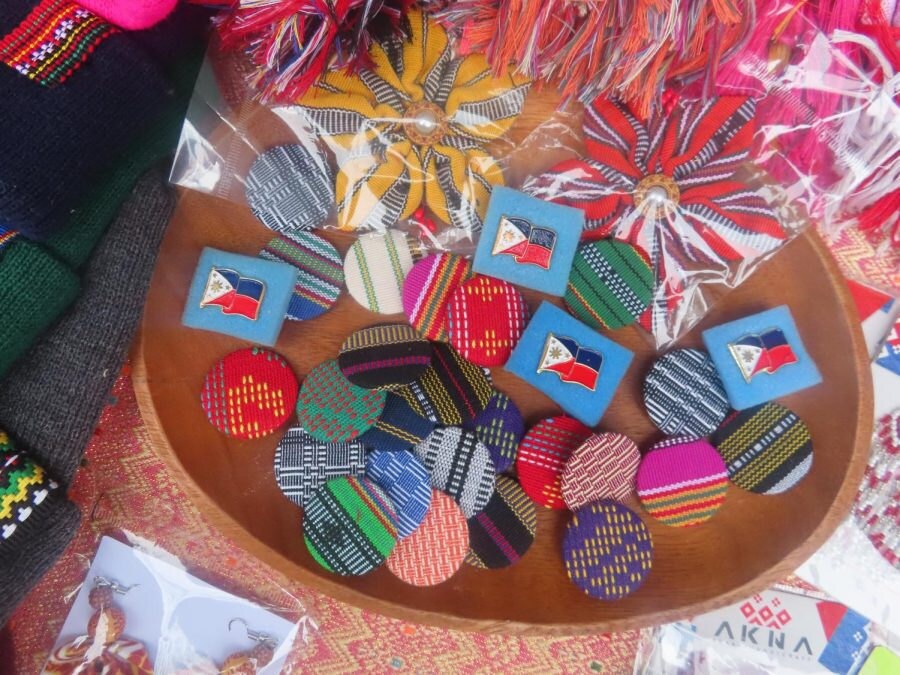By JULIA JARAMILLO and KATRINA MARTINEZ LUNA
For The Fordham Observer May 3, 2023
With spring fully sprung and summer in view, street fairs are popping up all over New York City. Among the dozens of fairs, Philippines Fest joined the stage on April 15 in downtown Manhattan from 10 a.m. to 6 p.m. The festival featured Filipino-run restaurants, food vendors and artists. Established in August 2022, Philippines Fest came about through the efforts of three Filipino business owners: Augelyn “Augee” Francisco, chef and owner of Kabisera in the Lower East Side; VJ Navarro, co-founder of pop-up vendor So Sarap NYC currently featured at Smorgasburg food festival in Williamsburg; and Paulo Manaid, owner of contemporary fashion store Hatzumomo. Alongside them are Daniel Corpuz, a chocolatier and owner of Daniel Corpuz Chocolatier, and Craig Nisperos, photographer and historian for the Philippines Fest. The group aims to provide a platform for Filipino-centric and Filipino-run small businesses to be featured on the metro New York street fair scene. The fair took place between 27th and 28th streets on 6th Avenue, and despite the heavy chance of rain that day, people from various cultural backgrounds crowded the streets. Tents housed eager and welcoming business owners with the Filipino flag flowing from the top. One of the tents was a karaoke station, an integral staple during any Filipino celebration.
Having previous experience cooking with traditional foods from different cuisines, Francisco explained that marketing Filipino goods is different compared to Japanese or Chinese food because it isn’t as widely loved and known. She added that to be able to have a Philippines Fest shows that Filipino businesses are able to appeal to people of any culture, not just Pinoy (people of Filipino descent).With the festival having been located in Chelsea, Francisco emphasized how much the traffic in one of New York’s popular neighborhoods could bring exposure to Filipino culture and small businesses. “There is really that part of being overshadowed, or unrecognized, unseen, unheard,” she explained. “However, what is special about Filipino businesses is also that it’s very rare. People go and find us. And the neighborhood where we are at, people are very open.”
Representation and an introduction to Filipino culture was a common theme reiterated by the co-organizers and entrepreneurs of the street fair. Though the Filipino community in New York City is not as large as it is in other U.S. states, it is sizable. According to the Pew Research Center, the population in 2019 was 236,000 Filipinos. Fordham itself has a growing community of Filipinos who are active in student involvement, such as through the club Filipinos of Lincoln Cente Offering Welcome (FLOW) and seeking to have their culture recognized more on campus. Elizabeth Gorai, owner of Asian fusion pop-up Mama T in Harlem, described how awareness was so important during the COVID-19 pandemic, when there was a serious increase in discrimination and violence against those of Asian descent. Philippines Fest provides a platform for Filipinos to combat ignorance by sharing their talent through food and crafts.Questions of representation aside, what can Philippines Fest offer non-Filipinos? It is a worthy introduction to an unfamiliar culture. The Philippines is a former longtime colony of both Spain and the United States, and has historically been influenced by its neighbors and through trade. Although elements of Chinese, Indian and Mexican cultures have been adapted into the country, the Philippines has not lost its native Southeast Asian roots, making it a fascinating site of both diversity and cultural blending.According to Gorai, this long history has made Filipino food special. “It’s really a fusion of so many different cuisines, East and West combined. So I think what makes Philippine cuisine so unique is we have flavors from other places that we make something of our own.”
And it seems that this fusion of cuisines was well-received at Philippines Fest. One of Mama T’s specialties – Ado bowl – sold out only halfway through the street fair. The rice bowl, a combination of Spanish-derived saffron rice topped with Filipino adobo (a stock made with soy sauce, vinegar and garlic), is one of the best examples of gastronomic intersection between West and Southeast Asia. Mama T was not the only tent bustling with business. Another stand assisted by Francisco, “Patok by Rach,” had an endless stream of customers. Within 10 minutes, the stand had sold two full baking pans of kutsinta, a steamed rice cake found throughout the Philippines. We ourselves bought five pieces, and they were delicious. Another stand, Sisig ng Bayan, closed early because they ran out of their main dish, “sisig,” a popular northern Filipino dish made of crispy pork cheeks cooked in soy sauce, onions, citrus and peppers. Several other pop-ups sold out long before the end of the fest as well, not anticipating the overwhelming reception and turnout from New Yorkers.

